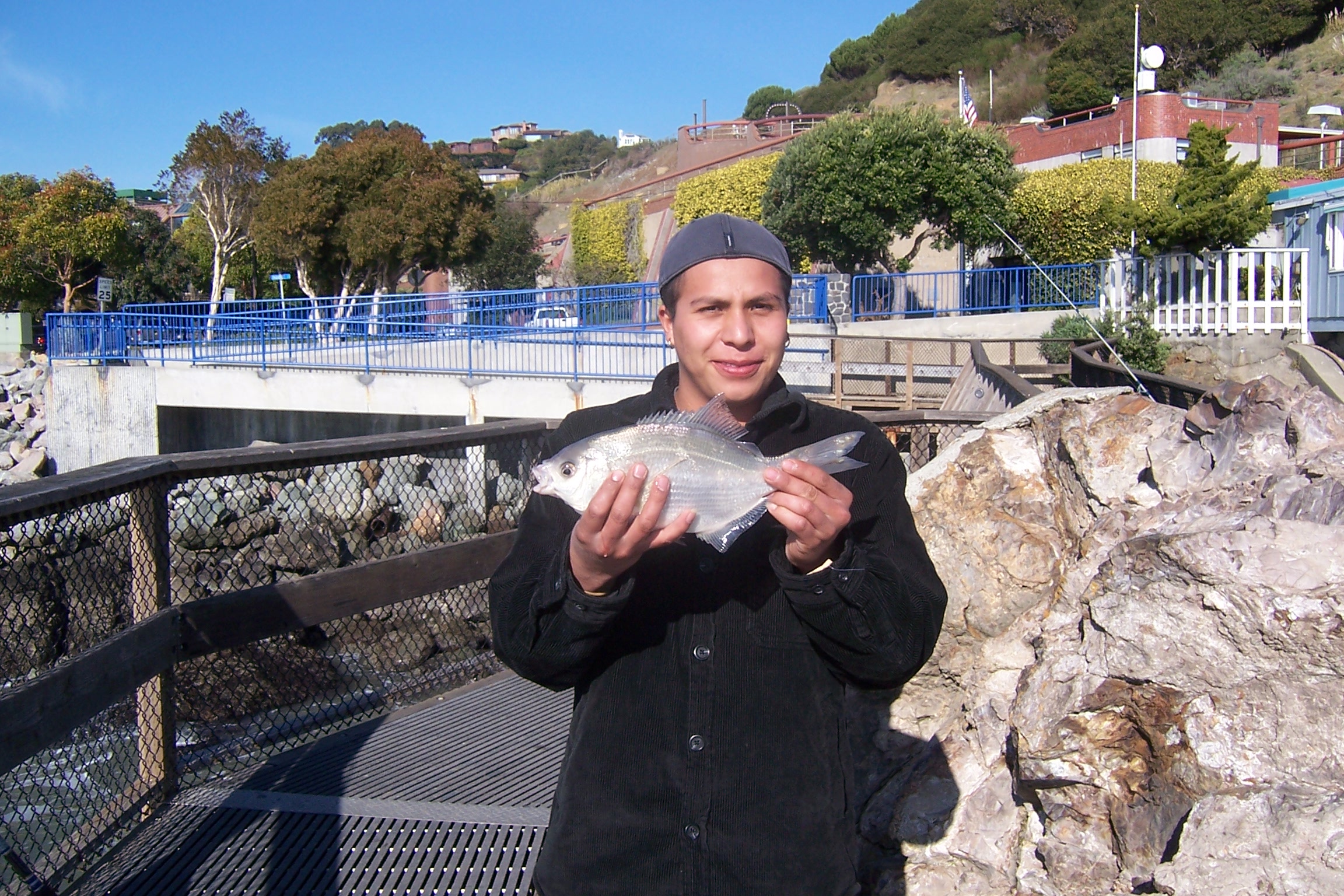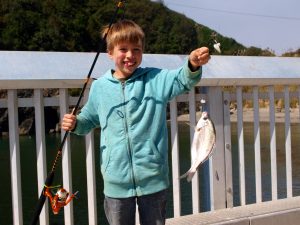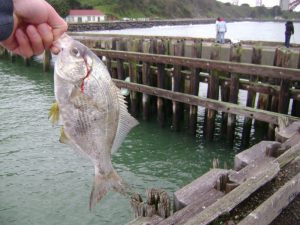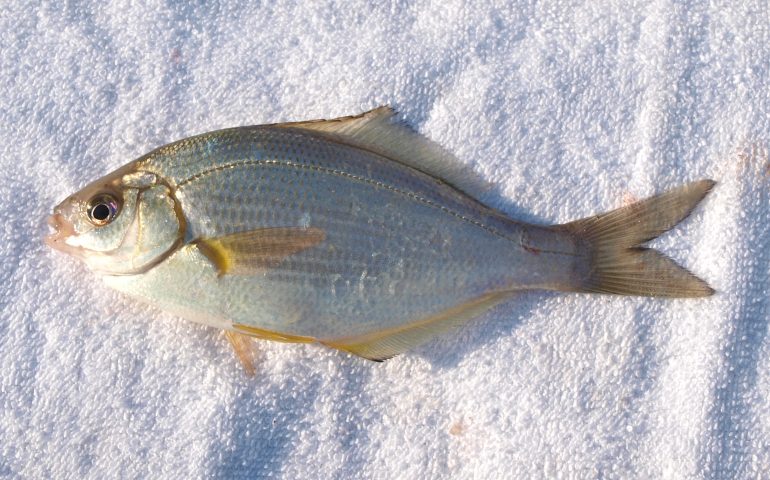Surfperches: Family Embiotocidae
Species: Phanerodon furcatus (Girard, 1854); from the Greek root words phaneros (evident) and odons (tooth) and the Latin word furcatus (forked tail). Family Embiotocidae, subfamily Embiotocinae.
Alternate Names: Splittail perch, forktail perch and white perch. In Mexico called mojarra lomo rayado.
Identification: White seaperch are often confused with pile perch. The tail is deeply forked and the first and second sections of the dorsal fin are about equal height; there is a black line along the base of the soft dorsal. The coloring is light silver or olive on the back, white or dark silver on the belly; often dusky with a rosy-orange cast; yellow at base of pelvic and anal fins. The fins are yellow or dusky. Sometimes with dark spots near the mouth but lacks the dark bar below the dorsal fin seen in pile perch.

White seaperch from the Elephant Rock Pier in Tiburon
Size: To 14.8 inches; most pier-caught fish are 8 to 10 inches.
Range: Bahia San Carlos, Isla Cedros, and Islas San Benito, central Baja California, to Vancouver Island, British Columbia. Common from Bahia San Quintin, northern Baja California, to California.
Habitat: Shallow-water areas both oceanfront and in bays, especially around combinations of rocks and fine sand. Recorded to a depth of 282 feet. Tends to form small schools.

A white seaperch taken at the Trinidad Pier
Piers: White seaperch can be caught on almost every pier in the state but in southern California they’re most commonly caught on piers inside of bays or harbors. Best bets: Shelter Island Pier, Oceanside Harbor Pier, Dana Point Harbor Pier, Redondo Sportfishing Pier, Santa Cruz Wharf, Pacifica Pier, San Francisco Municipal Pier, Santa Cruz Wharf, Berkeley Pier, Fort Baker Pier and the Commercial Street Dock (Eureka).
Shoreline: A common catch for shore anglers throughout the state, especially in bays.
Boats: An inshore species sometimes taken by boaters fishing in bays, especially San Francisco Bay.
Bait and Tackle: Normal gear is a high/low leader equipped with size 6 or 4 hooks fished on or near the bottom. White seaperch are not as finicky as pileperch or other seaperch and will take a wider variety of baits. However, live seaworms, fresh mussels, and live shrimp are the best bait.
Food Value: Large enough to eat with flesh that is mild in flavor with small flakes and soft texture. They taste best during the non-spawning season, are low in fat content, and can be cooked using most methods.
Comments: White seaperch are often found together with pile perch and blackperch.

A white seaperch from the Fort Point Pier in San Francisco
